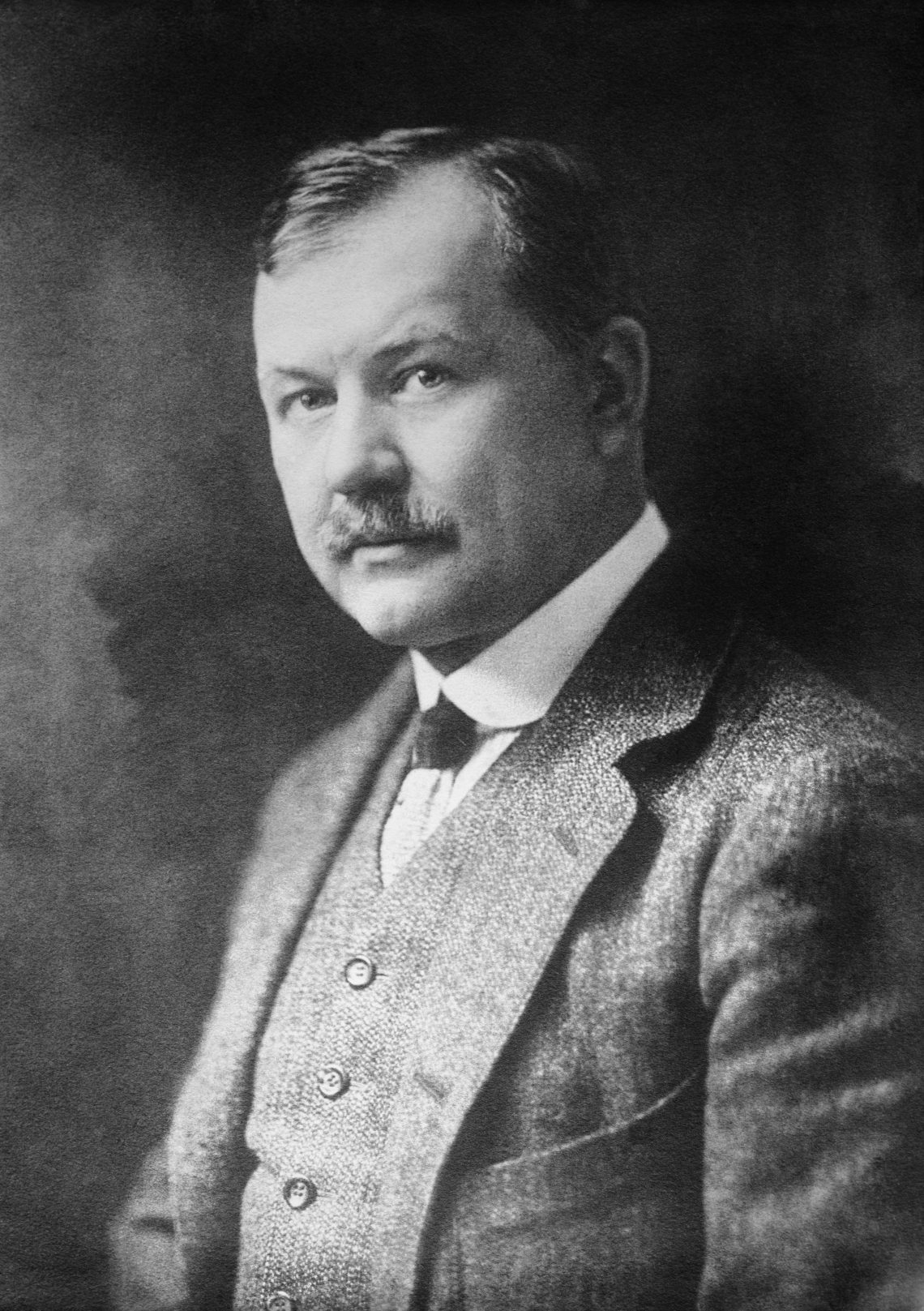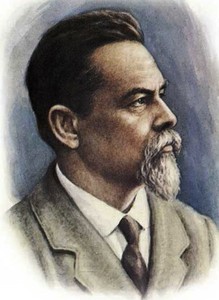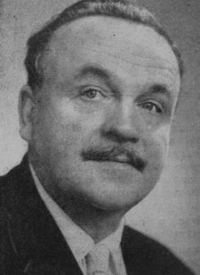
Franz Lehár |
Contents
Franz Lehár
Hungarian composer and conductor. The son of a composer and bandmaster of a military band. Lehar attended (since 1880) the National Music School in Budapest as a high school student. In 1882-88 he studied violin with A. Bennewitz at the Prague Conservatory, and theoretical subjects with J. B. Förster. He started writing music in his student years. Lehar’s early compositions earned the approval of A. Dvorak and I. Brahms. From 1888 he worked as a violinist-accompanist of the orchestra of the united theaters in Barmen-Elberfeld, then in Vienna. Returning to his homeland, from 1890 he worked as a bandmaster in various military orchestras. He wrote many songs, dances and marches (including the popular march dedicated to boxing and the waltz “Gold and Silver”). Gained fame after staging in Leipzig in 1896 the opera “Cuckoo” (named after the hero; from Russian life during the time of Nicholas I; in the 2nd edition – “Tatiana”). From 1899 he was regimental bandmaster in Vienna, from 1902 he was second conductor of the Theater an der Wien. The staging of the operetta “Viennese Women” in this theater began the “Viennese” – the main period of Lehar’s work.
He wrote over 30 operettas, among which The Merry Widow, The Count of Luxembourg, and Gypsy Love are the most successful. Lehar’s best works are characterized by a skillful fusion of intonations of Austrian, Serbian, Slovak and other songs and dances (“The Basket Weaver” – “Der Rastelbinder”, 1902) with the rhythms of Hungarian szardas, Hungarian and Tyrolean songs. Some of Lehar’s operettas combine the latest modern American dances, cancans and Viennese waltzes; in a number of operettas, melodies are built on the intonations of Romanian, Italian, French, Spanish folk songs, as well as on Polish dance rhythms (“Blue Mazurka”); other “Slavicisms” are also encountered (in the opera “The Cuckoo”, in “Dances of the Blue Marquise”, the operettas “The Merry Widow” and “The Tsarevich”).
However, Lehar’s work is based on Hungarian intonations and rhythms. Lehár’s melodies are easy to remember, they are penetrating, they are characterized by “sensibility”, but they do not go beyond good taste. The central place in Lehar’s operettas is occupied by the waltz, however, in contrast to the light lyrics of the waltzes of the classical Viennese operetta, Lehar’s waltzes are characterized by nervous pulsation. Lehar found new expressive means for his operettas, quickly mastered new dances (by the dates of operettas one can establish the appearance of various dances in Europe). Many operettas Legar repeatedly altered, updated the libretto and musical language, and they went in different years in different theaters under different names.
Lehar attached great importance to orchestration, often introduced folk instruments, incl. balalaika, mandolin, cymbals, tarogato to emphasize the national flavor of music. His instrumentation is spectacular, rich and colorful; the influence of G. Puccini, with whom Lehar had a great friendship, often affects; traits akin to verismo, etc., also appear in the plots and characters of some heroines (for example, Eve from the operetta “Eve” is a simple factory worker with whom the owner of a glass factory falls in love).
The work of Lehar largely determined the style of the new Viennese operetta, in which the place of grotesque satirical buffoonery was taken by everyday musical comedy and lyrical drama, with elements of sentimentality. In an effort to bring the operetta closer to the opera, Legar deepens dramatic conflicts, develops musical numbers almost to operatic forms, and widely uses leitmotifs (“Finally, alone!”, etc.). These features, which were already outlined in Gypsy Love, were especially evident in the operettas Paganini (1925, Vienna; Lehar himself considered her romantic), The Tsarevich (1925), Frederick (1928), Giuditta (1934) Modern critics called Lehár’s lyrical operettas “legariades”. Lehar himself called his “Friederike” (from the life of Goethe, with musical numbers to his poems) a singspiel.
Sh. Kallosh
Ferenc (Franz) Lehar was born on April 30, 1870 in the Hungarian town of Kommorne in the family of a military bandmaster. After graduating from the conservatory in Prague and several years of work as a theatrical violinist and military musician, he became the conductor of the Vienna Theater An der Wien (1902). From his student years, Legar does not leave the thought of the composer’s field. He composes waltzes, marches, songs, sonatas, violin concertos, but most of all he is attracted to musical theater. His first musical and dramatic work was the opera Cuckoo (1896) based on a story from the life of Russian exiles, developed in the spirit of veristic drama. The music of “Cuckoo” with its melodic originality and melancholic Slavic tone attracted the attention of V. Leon, a well-known screenwriter and director of the Vienna Karl-Theater. The first joint work of Lehar and Leon – the operetta “Reshetnik” (1902) in the nature of the Slovak folk comedy and the operetta “Viennese Women” staged almost simultaneously with it, brought the composer fame as the heir to Johann Strauss.
According to Legar, he came to a new genre for himself, completely unfamiliar with it. But ignorance turned into an advantage: “I was able to create my own style of operetta,” the composer said. This style was found in The Merry Widow (1905) to the libretto by V. Leon and L. Stein based on the play by A. Melyak “Attache of the Embassy”. The novelty of The Merry Widow is associated with the lyrical and dramatic interpretation of the genre, the deepening of the characters, and the psychological motivation of the action. Legar declares: “I think that the playful operetta is of no interest to today’s public … <...> My goal is to ennoble the operetta.” A new role in musical drama is acquired by dance, which is able to replace a solo statement or a duet scene. Finally, new stylistic means attract attention – the sensual charm of melos, catchy orchestral effects (like the glissando of a harp doubling the line of flutes into a third), which, according to critics, are characteristic of modern opera and symphony, but in no way operetta musical language.
The principles that took shape in The Merry Widow are developed in subsequent works by Lehar. From 1909 to 1914, he created works that made up the classics of the genre. The most significant are The Princely Child (1909), The Count of Luxembourg (1909), Gypsy Love (1910), Eva (1911), Alone at Last! (1914). In the first three of them, the type of neo-Viennese operetta created by Lehar is finally fixed. Starting with The Count of Luxembourg, the roles of the characters are established, the characteristic methods of contrasting the ratio of the plans of the musical plot dramaturgy – lyrical-dramatic, cascading and farcical – are formed. The theme is expanding, and with it the intonational palette is enriched: “Princely Child”, where, in accordance with the plot, a Balkan flavor is outlined, it also includes elements of American music; the Viennese-Parisian atmosphere of The Count of Luxembourg absorbs Slavic paint (among the characters are Russian aristocrats); Gypsy Love is Lehar’s first “Hungarian” operetta.
In two works of these years, tendencies are outlined that were most fully expressed later, in the last period of Lehar’s work. “Gypsy Love”, for all the typicality of its musical dramaturgy, gives such an ambiguous interpretation of the characters’ characters and plot points that the degree of conventionality inherent in the operetta changes to a certain extent. Lehar emphasizes this by giving his score a special genre designation – “romantic operetta”. Rapprochement with the aesthetics of romantic opera is even more noticeable in the operetta “Finally Alone!”. Deviations from genre canons lead here to an unprecedented change in the formal structure: the entire second act of the work is a large duet scene, devoid of events, slowed down in pace of development, filled with a lyrical-contemplative feeling. The action unfolds against the background of an alpine landscape, snow-capped mountain peaks, and in the composition of the act, vocal episodes alternate with picturesque and descriptive symphonic fragments. Contemporary Lehar critics called this work “Tristan” of the operetta.
In the mid-1920s, the last period of the composer’s work began, ending with Giuditta, which was staged in 1934. (Actually, Lehar’s last musical and stage work was the opera The Wandering Singer, a reworking of the operetta Gypsy Love, carried out in 1943 by order of the Budapest Opera House.)
Lehár died on October 20, 1948.
Lehar’s late operettas lead far away from the model that he himself once created. There is no longer a happy ending, the comedic beginning is almost eliminated. By their genre essence, these are not comedies, but romanticized lyrical dramas. And musically, they gravitate towards the melody of the operatic plan. The originality of these works is so great that they received a special genre designation in the literature – “legariads”. These include “Paganini” (1925), “Tsarevich” (1927) – an operetta that tells about the unfortunate fate of the son of Peter I, Tsarevich Alexei, “Friederik” (1928) – at the heart of its plot is the love of the young Goethe for the daughter of the Sesenheim pastor Friederike Brion , the “Chinese” operetta “The Land of Smiles” (1929) based on the earlier Leharov’s “Yellow Jacket”, the “Spanish” “Giuditta”, a distant prototype of which could serve as “Carmen”. But if the dramatic formula of The Merry Widow and Lehar’s subsequent works of the 1910s became, in the words of the genre historian B. Grun, “a recipe for the success of an entire stage culture”, then Lehar’s later experiments did not find continuation. They turned out to be a kind of experiment; they lack that aesthetic balance in the combination of heterogeneous elements that his classical creations are endowed with.
N. Degtyareva
- Neo-Viennese operetta →
Compositions:
opera – Cuckoo (1896, Leipzig; under the name Tatiana, 1905, Brno), operetta – Viennese women (Wiener Frauen, 1902, Vienna), Comic wedding (Die Juxheirat, 1904, Vienna), Merry widow (Die lustige Witwe, 1905, Vienna, 1906, St. Petersburg, 1935, Leningrad), Husband with three wives (Der Mann mit den drei Frauen, Vienna, 1908), Count of Luxembourg (Der Graf von Luxemburg, 1909, Vienna, 1909; St. Petersburg, 1923, Leningrad), Gypsy Love (Zigeunerliebe, 1910, Vienna, 1935, Moscow; 1943, Budapest), Eva (1911, Vienna, 1912, St. Petersburg), Ideal wife (Die ideale Gattin, 1913, Vienna, 1923, Moscow), Finally, alone! (Endlich allein, 1914, 2nd edition How beautiful the world! – Schön ist die Welt!, 1930, Vienna), Where the lark sings (Wo die Lerche singt, 1918, Vienna and Budapest, 1923, Moscow), Blue Mazurka (Die blaue Mazur, 1920, Vienna, 1925, Leningrad), Tango Queen (Die Tangokönigin, 1921, Vienna), Frasquita (1922, Vienna), Yellow jacket (Die gelbe Jacke, 1923, Vienna, 1925, Leningrad, with a new libre Land of Smiles – Das Land des Lächelns, 1929, Berlin), etc., singshpils, operettas for children; for orchestra – dances, marches, 2 concertos for violin and orchestra, symphonic poem for voice and orchestra Fever (Fieber, 1917), for piano – plays, songs, music for drama theater performances.





